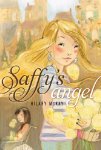Roald Dahl
Fiction
For ages 7 to 9
Penguin, 2009, 978-0142413852
I’d like to
introduce you to an eight-year-old girl who has a rather unusual gift, if you
can call it that. When she gets annoyed at someone, she points her finger at
the person and then strange things happen. For example, after the girl’s
teacher, Mrs. Winter, tells her that she is a “stupid little girl,” the girl
points her finger at Mrs. Winter who then sprouts a cat’s whiskers and tail.
Apparently the
Magic Finger is something she has always had, and she has no idea why or how it
works. All she does know is that when she gets “cross,” her finger tingles, “a
sort of flash” comes out of her, and the person she points at, the person she
is cross with, experiences something unpleasant.
One day the girl
sees her neighbors coming home from a hunting expedition carrying a dead deer.
The girl thinks that hunting is a horrible sport and she has tried again and
again to persuade Mr. Gregg and his two sons to give it up. Being dedicated
hunters, the Greggs ignore the girl’s words. When she sees that poor deer, the
girl really loses her temper and she puts the Magic Finger on Mr. Gregg and his
sons, and on Mrs. Gregg who didn’t even go hunting.
At first the little
girl has no idea what her Magic Finger has done to her neighbors, but later on
she finds out that they have an experience that truly changes their attitude
towards hunting. It is an experience that is, at times, quite terrifying.
Children who enjoy
stories about magical happenings are going to love this delightful tale. It is
hard not to feel cheered when one sees how things work out for the Greggs after
they experience the wrath of the Magic Finger.
As always, Roald
Dahl has crafted a clever and often funny story that perfectly suits a child’s
definition of justice.









